|
|
Dear Colleagues
This is the 50th PSI Facility Newsletter! Congratulations and thank you to the PSI User Office and all laboratories at SINQ, SμS, CHRISP, SLS and SwissFEL that contribute regularly. For those of you who use PSI Pocket and visit our new science website, staying in touch with PSI research in between your experiments has never been easier.
After a long period of exceptional circumstances, we are cautiously optimistic that the situation will improve rapidly now and that we will be able to welcome again many of you to do experiments on site.
|

Christian Rüegg
|
|
I am very proud of the important contributions that the science community and PSI have made to overcome this major health challenge to society. The special COVID-19 Call at SLS and SwissFEL remains open, as has the SLS itself at all times during the pandemic.
Doing things remotely, from experiments to conferences, has worked maybe surprisingly well. For some of our activities virtual interaction is an option and has a favourable time/climate impact-benefit ratio. But from my own experience many great ideas emerge from a break with colleagues 10 minutes after midnight at the Selecta coffee machine while doing an experiment. I also don’t believe that it is a great student learning experience running a neutron spectrometer and dilution refrigerator remotely from your bedroom. Building and exploiting complex instruments, and tweaking them in the right moment to make things work, has always been a key aspect of experimental research. Science is a hands-on experience with many levels of personal interaction.
A major concern right now is Switzerland’s and hence PSI’s participation in Horizon Europe. Switzerland is a highly reliable partner in large-scale facility research in Europe. We joined right from the beginning and co-realize many of the large European projects, including ILL, ESRF and ESS, and provide open access (approximately 40% of the beam time goes to collaborations with scientists in EU countries) based exclusively on scientific merit to all PSI facilities covered in this newsletter. Please support us in our ambition for excellent, collaborative and open science in Europe. We are an important part of it.
SINQ started its first full season with its brand-new neutron-optics system. SwissFEL-ATHOS was just completed and its soft X-ray beam will be available for users later this year. We received the required funding to realize the MBA-upgrade to SLS 2.0 with a short dark time of 15 months starting in autumn 2023 and a 40-fold increase in brightness by 2025. Scientific Computing, Theory and Data is a new division at PSI starting July 1, 2021, with the vision of a closer interaction of computing, modelling, data science and infrastructures with our large-scale facilities’ data and operation. Really exciting times lie ahead of us.
I am looking forward to meeting you again back on the PSI campus.
Christian Rüegg
Director - Paul Scherrer Institut
|
|
Next proposal submission deadlines:
SwissFEL
deadline: September 15, 2021
more information
SLS: non-PX beamlines
deadline: September 15, 2021
more information
SLS: PX beamlines
deadline: October 15, 2021
more information
SINQ
deadline: November 15, 2021
more information
SµS
deadline: December, 2021
more information
CHRISP
deadline: January 10, 2022
more information
An overview of all proposal submission deadlines of the PSI facilities can be found here.
|
|
|
Photolytic radical persistence due to anoxia in viscous aerosol particles
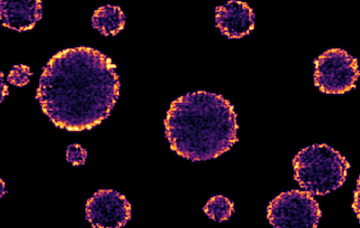 SLS — Looking at photochemistry inside particles SLS — Looking at photochemistry inside particles
A new photochemical reaction cell has been developed for the X-ray microscope at the PolLux beamline of SLS that allows mimicking sunlight-mediated chemical reactions in airborne particles. The setup was used to image the interior of photoactive organic particles — of the type we frequently inhale — to reveal the chemistry that produces a high concentration of persistent carbon-centred radicals and reactive oxygen species, which can cause damage to the respiratory tract. It was found that when the relative air humidity is below 60%, particles can become highly viscous or even glass-like, drastically reducing the mobility of molecules therein. At the same time, due to the combined effects of fast reaction and slow diffusion near the surface, oxygen does not penetrate such particles, so that the harmful radicals are effectively trapped, increasing their potential for doing harm.
Read the full story |
|
|
P.A. Alpert et al., Nature Communications 12, 1769 (2021)
|
|
|
A Stern-Gerlach experiment without spatial beam splitting
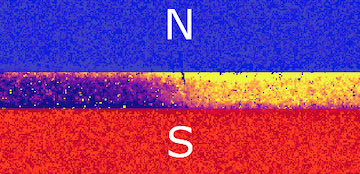 SINQ — A subtle spin on a century-old experiment SINQ — A subtle spin on a century-old experiment
The famed Stern–Gerlach experiment has lost nothing of its appeal since it was first performed in 1922. As a beam of spin-bearing particles passes through a magnetic-field gradient, particles in different quantum states are spatially separated, making quantisation directly visible. But Stern–Gerlach-type splitting can be exploited without spatial beam separation, too, as an international team led by PSI researchers demonstrate. In their experiment, polarized neutrons in a centimetre-sized beam are split transversally by sub-micrometre distances according to their spin state. In Talbot–Lau interferometric imaging experiments recently pioneered at SINQ, the thus-split spin components create independent interference patterns whose destructive superposition leads to decreased visibility — which so far has been explained in the context of coherence loss. This insight might now open up new routes to imaging magnetic microstructures.
Read the full story |
|
|
J. Valsecchi et al., Physical Review Letters 126, 070401 (2020)
|
|
|
Spin-singlet to triplet Cooper pair converter interface
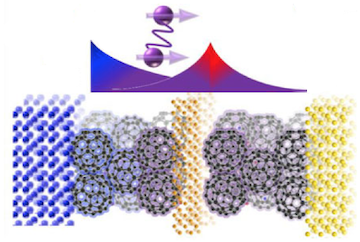 SμS — Molecular interfaces for tuning superconducting correlations SμS — Molecular interfaces for tuning superconducting correlations
Superconductivity and ferromagnetism are traditionally considered antagonistic states of matter. But when they can be made to co-exist, the combination of magnetic and superconducting properties could enable low-power electronics and spintronic functionality. An international team led by researchers form the University of Leeds (UK) now present a system in which emergent spin-ordering and diffusion of Cooper-pairs are achieved. They demonstrate that in heterostructures of superconductor and normal-metal thin-films a suitably designed layer of C60 molecules can mediate the leakage of Cooper-pair states via the proximity effect. Low-energy muon spin rotation experiments at SμS, combined with electron-transport measurements and magnetometry, establish that at such metallo-molecular interfaces, spin-singlet to triplet Cooper-pair conversion takes place, which in turn could be used for generating and controlling diffusion of spin-polarised dissipationless currents.
Read the full story |
|
|
M. Rogers et al., Communications Physics 4, 69 (2021)
|
|
|
Hard X-ray transient grating spectroscopy on bismuth germanate
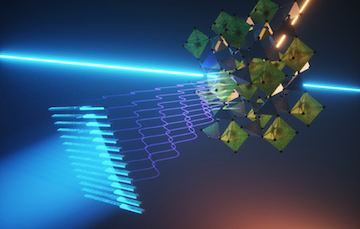 SwissFEL — Uniquely sharp X-ray view SwissFEL — Uniquely sharp X-ray view
Researchers at SwissFEL have demonstrated, for the first time, transient grating (TG) spectroscopy in the hard X-ray regime. TG spectroscopy is based on generating an interference pattern by crossing two simultaneous pulses in a solid sample. In this way, a grating of spatially modulated excitation is created, from which subsequently a time-delayed probe pulse is diffracted. This versatile, background-free technique for probing vibrational, magnetic and electronic degrees of freedom in the time domain has been established first in the optical domain, and has recently been demonstrated in the extreme ultraviolet (EUV) regime as well. The extension into the hard X-ray range now enables access to bulk properties of materials with atomic selectivity involving nanoscale TG spatial periods, and paves the way for X-ray ultrafast coherent four-wave-mixing techniques (graphics courtesy: Ella Maru Studio).
Read the full story |
|
|
J.R. Rouxel et al., Nature Photonics, 22 April 2021 (online)
|
|
|
HIMB Physics Case Workshop
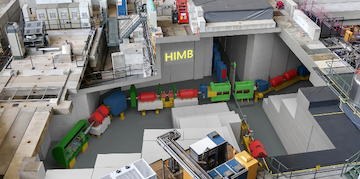 CHRISP — A strong case for the High-Intensity Muon Beam project CHRISP — A strong case for the High-Intensity Muon Beam project
From April 6–9 more than 120 scientists from Japan, Europe and America participated in a virtual workshop dedicated to preparing the science case of a future high-intensity muon beam (HIMB) at PSI. The main cases were presented in the plenary sessions, including the possibility of producing an ultralow-energy muon beam of high brilliance with the new muCool facility. On the particle-physics side, searches for charged lepton flavour violation, a possible measurement of the muon electric dipole moment, and muonium production featured prominently. For muon spin spectroscopy, fresh opportunities for advancing the technique with vertexing as well as sub-surface and pulsed beams were discussed. Elemental analysis with negative muons was considered as well. During the following parallel sessions more detailed discussions took place within smaller groups.
Read the full story |
|
News from the user facilities
|
|
|
HERCULES School 2021
SLS and SINQ
During the week of March 15–19, we had the pleasure of welcoming 20 international PhD students, postdocs and assistant professors for the first virtual HERCULES School on Neutrons and Synchrotron Radiation. The participants attended online lectures, virtual tours, remote practicals at SLS beamlines and tutorials at SINQ. The school is dedicated to introducing scientists to new techniques and methods at large-scale facilities utilizing photons and neutrons, and covers multiple disciplines, including biology, chemistry, physics, material science and industrial applications. It runs for one month, of which one week is hosted by PSI.
More information |
|
New rate record for LEM and recent proposal submission
SμS
This year, the LEM event rate reached a new all-time record with 2600/sec, which translates - after correction for detection efficiencies - into a muon rate of 6000/sec at the sample, and 13000/sec at the moderator. This could be achieved due to the newly installed slanted muon production target and a high proton current of 2 mA. As these results were obtained with a solid argon moderator, even higher rates up to 21000/sec can be anticipated if a solid neon moderator with extraction voltages up to 10 kV will be used.
Also, SμS received a total of 83 new proposals that were submitted at the recent deadline on June 9. The call was open for the instruments GPD, GPS, HAL-9500 and LEM and the users asked for 426 days of beamtime for the period October - December 2021. Presently the proposals are being evaluated by the external proposal review committee and we will inform the users as soon as possible.
|
|
Characterizing the transverse phase space of high-brightness electron beams
SwissFEL
A new method for characterizing the transverse phase space of a strongly focused, ultra-relativistic electron beam with sub-micrometer resolution has been introduced and validated at SwissFEL. The approach is based on a series of measurements with nanofabricated wire scanners at different angles and locations along the beam waist. From these data, the transverse phase space is reconstructed using an iterative tomographic algorithm. The technique has been demonstrated in experiments with the ACHIP (Accelerator on a Chip International Program) chamber at SwissFEL, but should be applicable as well in other experiments in which focused high-brightness electron beams need to be characterized.
More information |
|
Magnetically shielded from the rest of the world
CHRISP
PSI researchers, together with the company VACUUMSCHMELZE, have completed the construction of a 25-cubic-metre magnetically shielded room with a (for a walk-in room) record-low measured residual magnetic field of below 150 picotesla. This room will be the centre piece for the next-generation neutron EDM experiment n2EDM, which is due to be fully assembled in 2022.
More information |
|
JUSAP - The Joint Users Association:
|
|
Dear Colleagues
The new JUSAP panel 2021-2024 held its first meeting in May 2021 with the election of the JUSAP chair Joanna Hoszowska, and the representative of the European Synchrotron and FEL User Organisation (ESUO) Annick Froideval. As our mission is to represent the users of the PSI large-scale facilities and to promote research at the user laboratories, the board discusses user issues on a regular basis. We encourage you, members of the PSI community, to get in touch with us directly.
|
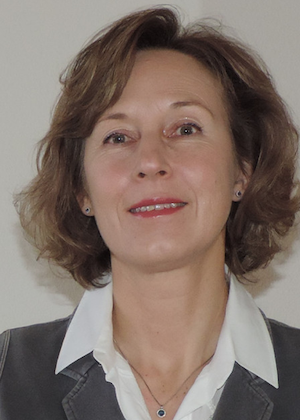
Joanna Hoszowska
|
|
The pandemic is affecting the PSI user operation in many aspects, however, thanks to the PSI staff commitment and all undertaken measures the good news is that the number of experiments stay on course! To further enhance safety of user operation during the ongoing pandemic mandatory PCR or rapid antigen tests for our users arriving at PSI have been introduced at the beginning of May. Please have a look at the details here.
Proposal deadlines for SINQ and SμS have passed in May and June, respectively, and the User Office will send out the results of the evaluation as soon as possible.
Cutting-edge research at PSI large-scale facilities is not reserved to academic users only! The JUSAP panel encourages the industrial sector to benefit from the advanced and innovative characterization techniques available at PSI. The PSI Technology Transfer Office, the SLS TT AG, ANAXAM and a strong network of mediators and spin-off companies built around PSI large-scale facilities will be happy to support you with tailored solutions to help solving industrial challenges. More information regarding PSI Technology Transfer, industry highlights and useful links can be found on PSI’s dedicated webpage - email info@anaxam.ch for a direct contact with the Technology Transfer Center for Advanced Manufacturing ANAXAM.
ESUO activities and future plans as part of the CALIPSOplus project and of the partnership with the League of European Accelerator-based Photon Sources (LEAPS) have recently been published. Please find corresponding detailed information here. Moreover, ESUO delegates from 30 countries, together with other participants, are expected to meet on July 2, 2021 in the framework of an online ESUO annual meeting for an exchange regarding the (co-)development of ESUO activities, including the transformation of ESUO into a legal entity under Belgian law.
Yours sincerely,
The JUSAP committee
|
|
|
|